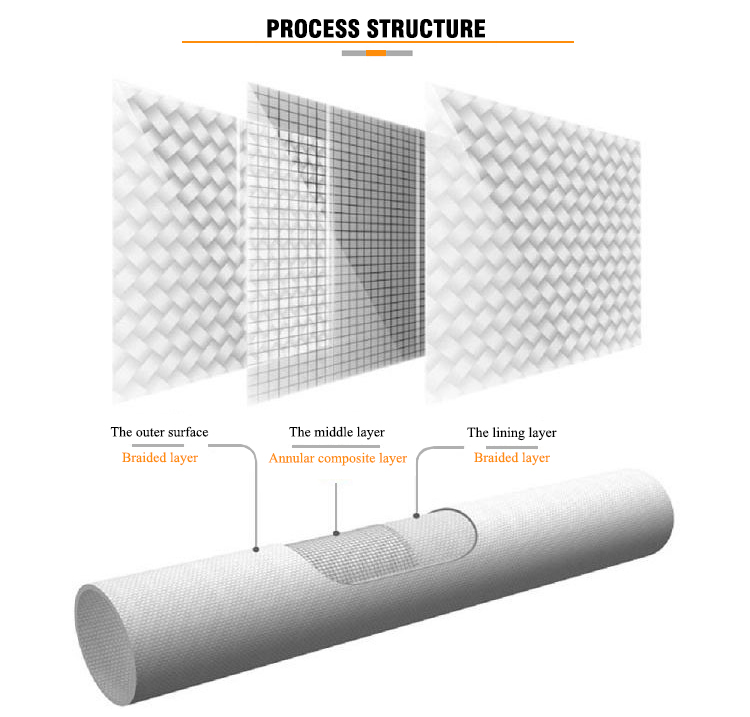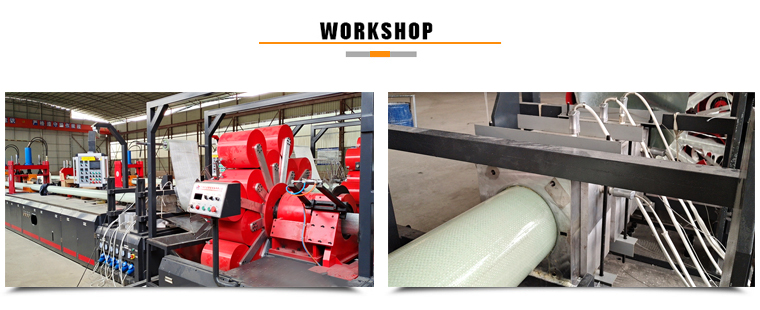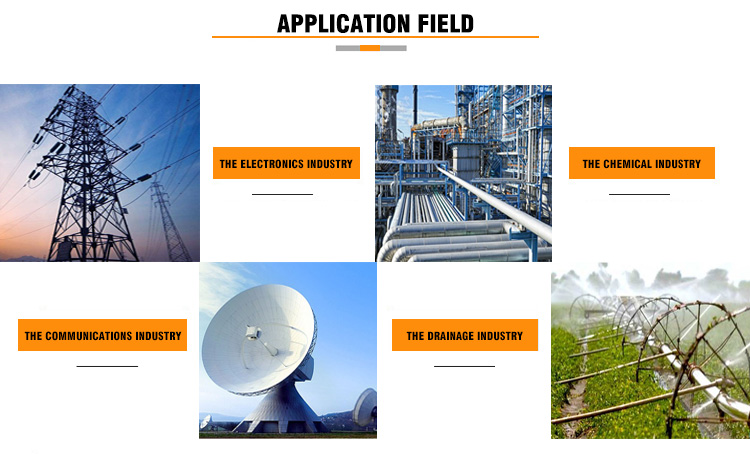FRP pipe is a new type of composite material, its manufacturing process is mainly based on the high resin content of glass fiber winding layer by layer according to the process, It is made after high temperature curing. The wall structure of FRP pipes is more reasonable and advanced, which can give full play to the role of materials such as glass fiber, resin and curing agent, which not only meets the strength and rigidity used, but also ensures the stability and reliability of FRP pipes.
Technical characteristics
1.Continuous winding production process
The continuous winding molding process is divided into three types: dry winding, wet winding and semi-dry winding according to the physical and chemical state of the resin matrix during fiber winding molding. Dry winding is to use prepreg yarn or tape that has been prepreg treated, which is heated on a winding machine to soften it to a viscous fluid state and then wound onto a core mold. The biggest feature of the dry winding process is its high production efficiency and the winding speed can reach 100-200m/min; the wet winding is to directly wind the fiber bundle (yarn-like tape) on the mandrel under tension control after being dipped in glue; Dry winding requires adding drying equipment to remove the solvent in the dipped yarn after the fiber is dipped into the core mold.
2.Internal curing molding process
The internal curing process is an efficient molding process for thermosetting fiber composite materials. The core mold required for the internal curing process is a hollow cylindrical structure, and both ends are designed with a certain taper to facilitate demolding. A hollow steel pipe is coaxially installed inside the core mold, that is, heating For the core tube, one end of the core tube is closed, and the other end is open as a steam inlet. Small holes are distributed on the wall of the core tube. The small holes are symmetrically distributed in the four quadrants from the axial section. The core mold can rotate around the shaft, which is convenient for winding.
3.Demoulding system
In order to overcome many shortcomings of manual demolding, the modern glass steel pipe production line has designed an automatic demolding system. The mechanical structure of the demolding system is mainly composed of a demolding trolley device, a locking cylinder, a demolding friction clamp, a supporting rod and a pneumatic system. The demolding trolley is used to tighten the core mold during winding, and the cylinder is locked during demolding. The piston rod is retracted, the clamping steel ball raised on the tailstock side is put down, the spindle is loosened, and then the demolding friction tongs complete the spindle clamping process through the friction force of the spindle rotation and the cylinder, and finally locking the cylinder and the demolding friction tongs Separate the tube body from the core mold with other devices to complete the demolding process.
Future development prospects
Broad product application field and large market space
FRP pipelines are highly designable and can meet the application needs of many fields. Common application fields include shipbuilding, marine engineering equipment manufacturing, petrochemical, natural gas, electric power, water supply and drainage, nuclear power, etc., and the market demand is large.
Post time: Apr-27-2021










